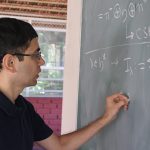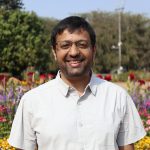Chaya Ganesh is interested not only in chasing after new cryptography problems, but also exploring their impact on daily life.
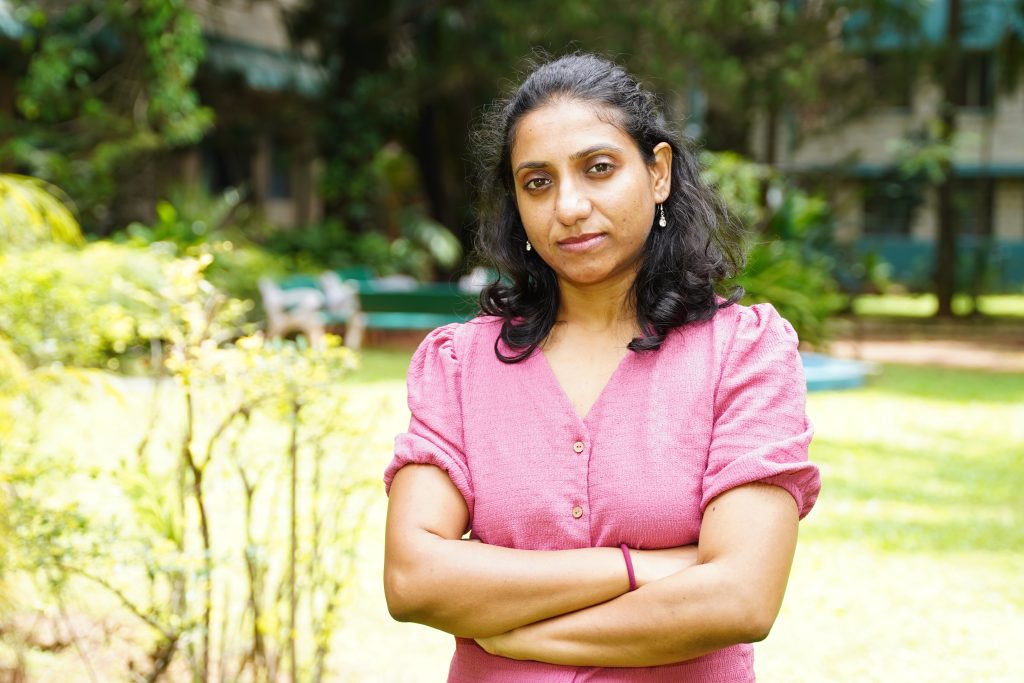
When you hear the word cryptography, you might picture clandestine messages, shadowy spies, and secret codes whispered in the dead of night. However, modern cryptography transcends these romantic notions, having evolved into a sophisticated science, says Chaya Ganesh, Assistant Professor at the Department of Computer Science and Automation (CSA).
During her undergraduate days, Chaya was confused about what would be her calling in life. All she knew was that she loved mathematics. It was an internship at the Indian Institute of Technology Madras (IITM) and reading Simon Singh’s The Code Book that ignited her passion for cryptography. After a brief stint in the industry, she eventually obtained a Master’s degree. She then pursued her PhD at New York University, and a postdoctoral stint at Aarhus University, before returning to India and joining IISc in 2019.
Chaya acknowledges that she has had many “cheerleaders” both in her family and in her career. She points out how, unlike many other fields, cryptography boasts several pioneering women, such as Turing Award-winner Shafi Goldwasser, who have paved the way for future generations of cryptography researchers.
An evolving field
Cryptography has evolved far beyond just securing communication between two users. In today’s digital, decentralised world, its scope also extends to critical issues such as privacy, integrity, scalability, and availability.
For example, take blockchain technology, which is essentially a digital ledger that stores records such as bank transactions. Everyone in the network has a copy of the ledger and can see what transactions have happened, but cryptography techniques can secure private information in these records so that no one can tamper with them without being detected. However, this means that adding a new record to this ledger requires significant computational work. Think of this as a very hard exam like the JEE which somebody has to crack. The key problem here is scalability, as the ledger is constantly evolving – records are being added all the time, and every time an entry is added, it reflects in the copies that everyone else has. Participants need to recompute this ledger every time to see the current state (akin to a bank passbook), and in extreme cases, redo all the calculations from the start. “But cryptography has an answer to this,” says Chaya, “called a proof system. It is an active area of my research.”
The central idea in a proof system is that computation is often more expensive than verification of a proof. For instance, solving a Sudoku puzzle (computation) could be extremely hard, but once somebody gives you a solution to the puzzle, checking that the solution you have is correct (verification) is easy to do. This computation can be outsourced to a powerful computer or server. Think of it as being handed the answer key to a multiple choice question exam. The machine provides a computed “answer sheet” to the user and all the user needs to do is verify that the answers match, without having to learn how to solve the questions themselves. This allows proving correctness in such a way that none of the secrets in the program or puzzle are revealed.
“Any problem where you will have to trust an entity, and it is not reasonable in the real world to trust, cryptography can replace this trust,” Chaya explains.
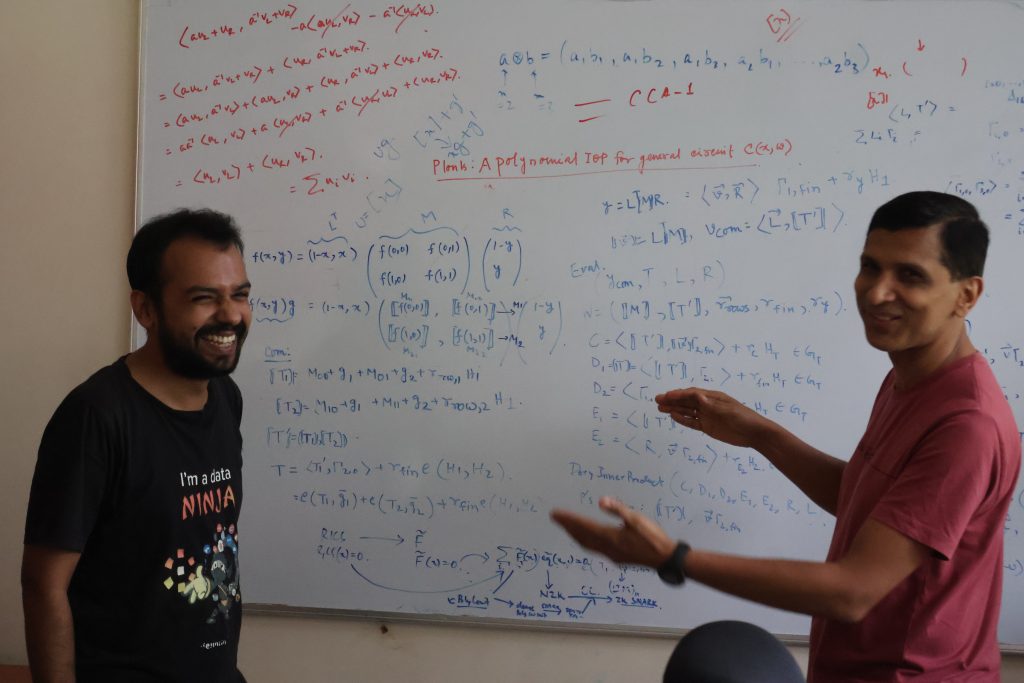
Chaya is also interested in an area called Rational Secure Computation. Recently, she collaborated with Bhavana Kanukurthi, Associate Professor at CSA, and students Girisha Shankar and Shreyas Gupta to study online auctions.
Traditionally, cryptography puts parties (users) in one of two buckets: honest or malicious. “However,” says Chaya, “this dichotomy is not fine-grained enough to capture real world threats.” In the real world, parties are neither purely honest nor malicious; there are rational “agents” or users who will deviate from either, depending on their self-interest. This means that parties will deviate from protocols if it benefits them.
Rational Secure Computation involves constructing protocols that guarantee equilibrium, ensuring that rational parties have no incentive to deviate. This approach captures the complexities of real-world interactions more accurately than traditional models. Chaya’s team has developed protocols which ensure that following the protocol maximises each party’s utility – the benefits accrued by following the protocol. “Rationality is the right way to think about security in today’s world, and it also gives us more efficient protocols,” she argues.
Security and society
Today, digital data sharing has become much more common, like UPI payments. Chaya says that there is therefore a greater need for systematic privacy and protection policies. “In theory, a lot of cryptography is already in place to give very fine-grained access control. These policies can simply be imposed. However there is a gap between theory and deployment,” Chaya says. “Europe has its general data protection regulation (GDPR), but there is no equivalent to it in India.”
In the long term, she is also motivated to apply some of her research to address practical challenges via machine learning (ML). In today’s world, ML models make critical decisions, such as determining who should receive loans or credit cards. Cryptography can play a pivotal role in ensuring fairness and transparency in ML, she says.
Yet another challenge for cryptography is the rise of quantum computing. Hackers armed with powerful quantum computers would theoretically be able to crack traditional encrypted codes much faster. Chaya, however, remains optimistic. Most cryptographic protocols hinge on the assumption that cracking a certain code would automatically entail solving a well-known extremely hard problem. Since these hard problems have withstood all attempts to solve them, it is therefore unlikely that one could crack a particular code – if one did, they could have used the same technique to solve the hard problem, which is not possible. Cryptographic protocols are built upon many such hardness assumptions. Even if one assumption is broken, alternative assumptions can be employed. “We cryptographers put our eggs in many baskets,” she says. There are many solutions called post-quantum cryptographic schemes that seek to offer security even from powerful quantum computers.
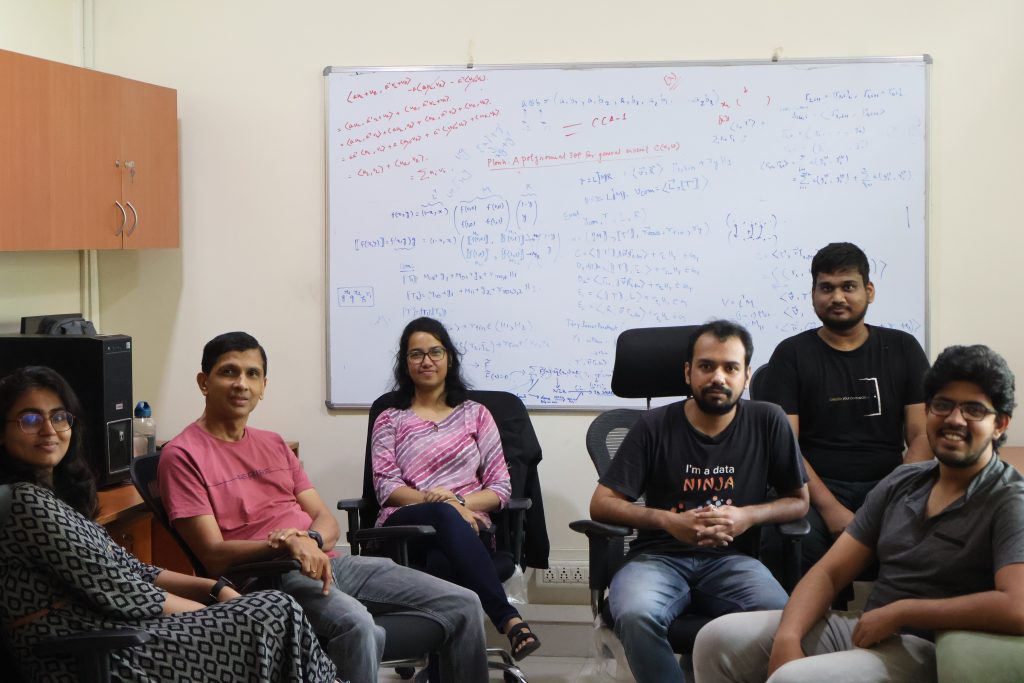
Chaya says that she enjoys doing academic research as it offers her unparalleled freedom to explore scientific questions without the pressure of immediate results. “I try to keep at least one day in the week to myself for long uninterrupted hours of thinking,” she adds. Apart from research, she also finds time for pencil sketching and reading a variety of fiction, non-fiction, and poetry.
For aspiring cryptography researchers, a strong foundation in mathematics and theoretical computer science is a must, she says, as is a sense of curiosity. “A lot of students have a misconception that cryptography as a field … is all about ciphers.” Cryptography also has the dubious distinction of being an area in which one can sometimes be stuck on a single problem for years without making progress. However, Chaya points out, one’s efforts are never wasted because it is this process that shapes them as a researcher.
“It often happens that you don’t solve the problem that you set out to do, but there are intangible benefits that one should be mindful of. You will internalise some of the barriers to the problem. You will not have the solution, but you will know that this didn’t work,” she elaborates. “Instead of writing a paper that says, ‘Here is a solution to the problem,’ you will end up writing a paper saying that this problem cannot be solved by a class of techniques. But that can happen only if you pay attention to why you were not able to solve it.”



